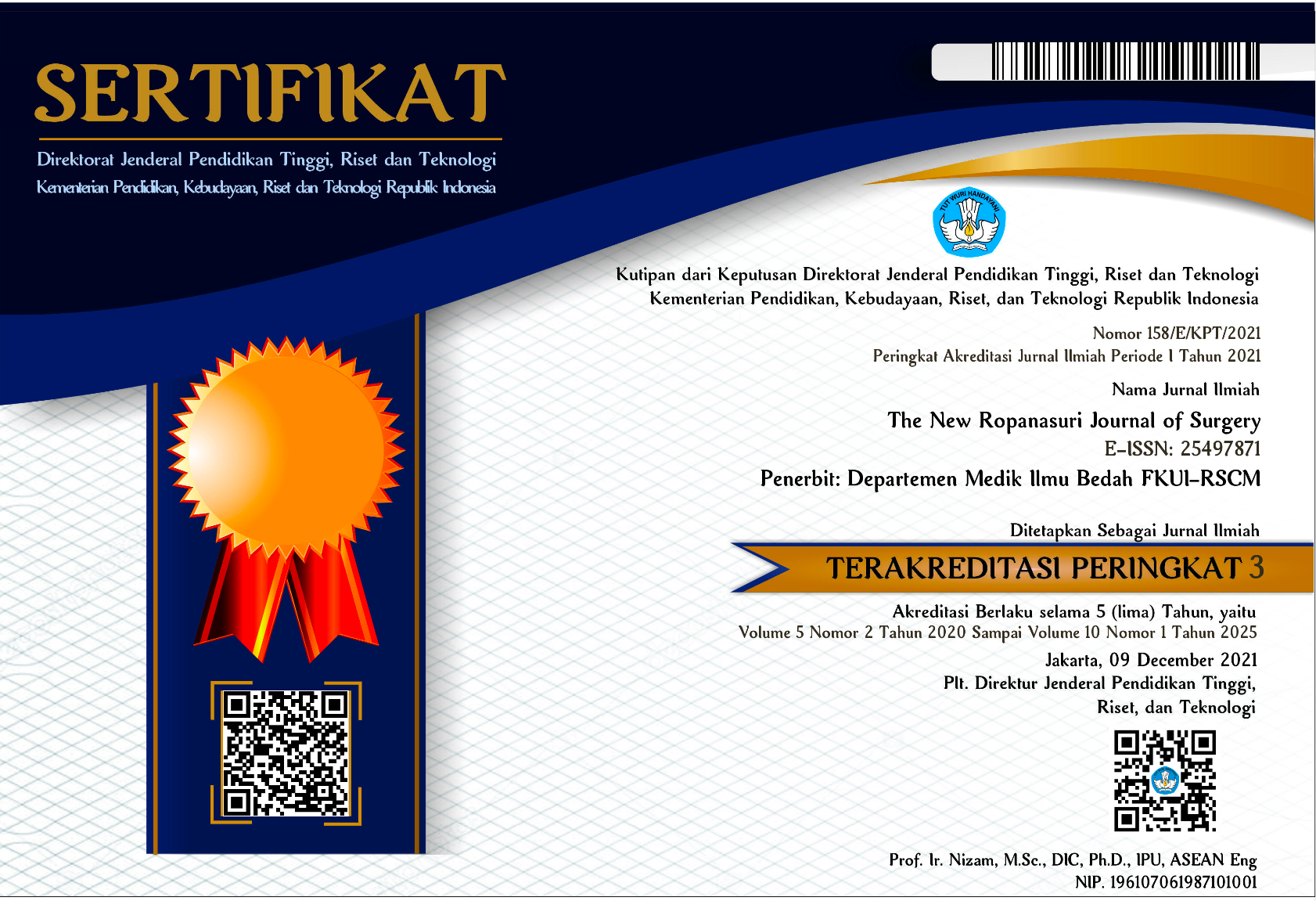Abstract
Introduction. Obesity is an independent risk factor and prognostic factor of primary breast cancer. Abundant adipose tissue would lead to increment of blood estrogen level; thus, promoting proliferation of cancer cell, especially those with positive estrogen receptor (ER) and progesterone receptor (PR). No study reported the association between obesity and hormone receptor characteristics of primary breast cancer in Indonesia.
Method. We collected cases of primary breast cancer which is diagnosed and undergone immunohistochemistry examination at Cipto Mangunkusumo General Hospital in 2017. The subjects divided into obese group and non-obese group. The ER and PR characteristics of both groups were compared
Results. We collected 202 cases of primary breast cancer, with 89 cases (44%) in obese group and 113 cases (56%) in non-obese group. The mean body mass index (BMI) of the subjects was 24.45±4.3. Both groups were similar in terms of age, menopausal status, stage, histopathological morphology and grade. No significant association was found between obesity and ER or PR. We analyzed correlation between BMI and the percentage of expressed hormone receptor, but no correlation was found. This finding did not conform with other Western studies. Difference in characteristics of the subjects and other hormonal factors might contribute to the outcome.
Conclusion. There is no association between obesity and hormone receptor characteristics of primary breast cancer at Cipto Mangunkusumo General Hospital in 2017.
Keywords: obesity, hormone receptor, estrogen, progesterone, primary breast cancer
Recommended Citation
Gunardi, Hardian and Kartini, Diani
(2019)
"Association between Obesity and Hormone Receptor Characteristics of Primary Breast Cancer at Cipto Mangunkusumo General Hospital, Jakarta, in 2017,"
The New Ropanasuri Journal of Surgery: Vol. 4:
No.
2, Article 3.
DOI: 10.7454/nrjs.v4i2.1060
Available at:
https://scholarhub.ui.ac.id/nrjs/vol4/iss2/3













